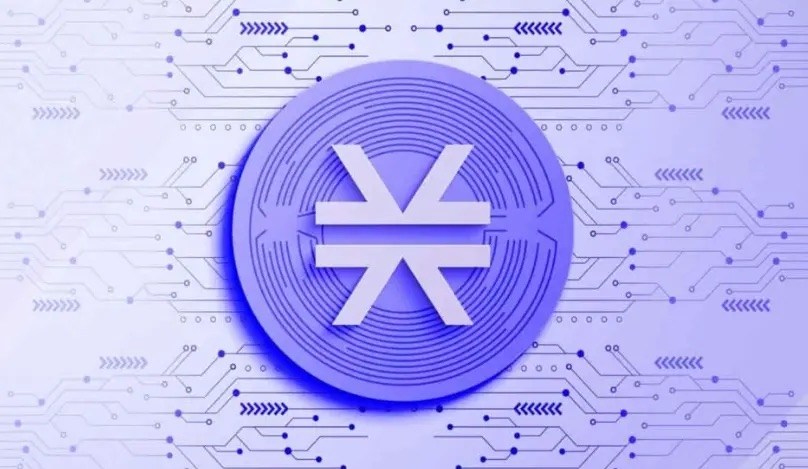The Rise of Stablecoin-Driven Cross-Border Payments: How Circle and Finastra Are Reshaping the Financial Infrastructure Landscape
- Circle and Finastra integrate USDC into GPP platform, enabling instant cross-border settlements bypassing traditional banking networks. - USDC reduces intermediary costs by 70% and accelerates transactions from days to seconds, with $5 trillion daily processing potential. - Regulated frameworks like MiCA and GENIUS Act validate USDC's compliance, positioning it to capture $320B cross-border payments market by 2030. - Strategic partnerships with Mastercard and early adopters demonstrate scalable tokenized
The financial infrastructure landscape is undergoing a seismic shift as stablecoin-driven cross-border payments gain traction. At the forefront of this transformation is the strategic collaboration between Circle and Finastra, which has embedded USD Coin (USDC) into Finastra’s Global PAYplus (GPP) platform. This integration enables banks to settle cross-border transactions in USDC while retaining fiat currency instructions, effectively bypassing the inefficiencies of traditional correspondent banking networks. For investors, this partnership represents a pivotal moment in the evolution of blockchain-enabled payment systems, with profound implications for liquidity, cost efficiency, and institutional adoption.
A New Paradigm for Cross-Border Payments
Finastra’s GPP platform processes over $5 trillion in cross-border transactions daily, making it a critical node in global finance. By integrating USDC, the platform now offers a blockchain-based settlement layer that accelerates transaction speeds from days to seconds while reducing intermediary costs by up to 70% [1]. For example, a $10,000 transfer from New York to Tokyo, which traditionally incurs 5–7% in fees and takes 3–5 days, could now settle instantly at a fraction of the cost [1]. This shift is not merely incremental—it redefines the economics of cross-border payments, particularly for institutions seeking to optimize liquidity and reduce operational friction.
Circle’s USDC, with a circulating supply of $69 billion as of August 2025, is positioned to disrupt the $320 billion cross-border payments market by 2030 [1]. The stablecoin’s fully reserved, audited structure aligns with regulatory expectations, addressing institutional concerns about transparency and risk management. This alignment is critical, as frameworks like the U.S. GENIUS Act and the EU’s MiCA (Markets in Crypto-Assets) are increasingly legitimizing tokenized money systems [4]. For investors, the confluence of technological innovation and regulatory clarity creates a compelling case for long-term growth.
Strategic Partnerships and Scalability
The Circle-Finastra collaboration is part of a broader trend of stablecoin integration into mainstream financial infrastructure. Mastercard’s recent partnership with both entities to expand USDC-based settlements in the EEMEA region underscores the scalability of this model. Early adopters like Arab Financial Services report 30% faster settlements and 20% lower liquidity costs, demonstrating the tangible benefits of tokenized solutions [4]. These partnerships are not isolated experiments but part of a coordinated effort to modernize a sector long plagued by inefficiencies.
Finastra’s CEO, Chris Walters, emphasized that the collaboration provides banks with innovative settlement options without requiring them to overhaul legacy systems [1]. This “incremental modernization” approach is key to adoption, as it minimizes disruption while unlocking the benefits of blockchain technology. For investors, the ability to scale without systemic overhauls reduces implementation risks and accelerates market penetration.
Investment Implications
The investment case for stablecoin-driven cross-border payments hinges on three pillars: market size, cost efficiency, and regulatory tailwinds.
- Market Size: The global cross-border payments market is projected to grow at a compound annual rate of 6.5% through 2030, driven by digitalization and demand for faster, cheaper transactions [1]. USDC’s current market cap of $69 billion represents just 2.2% of this market, leaving ample room for expansion.
- Cost Efficiency: By reducing reliance on correspondent banking networks, USDC settlements could cut operational costs by up to 70% for institutions [1]. This margin improvement is particularly attractive in a low-interest-rate environment where liquidity optimization is paramount.
- Regulatory Tailwinds: The alignment of USDC with frameworks like MiCA and the GENIUS Act mitigates regulatory uncertainty, a persistent barrier to crypto adoption. This alignment also positions Circle and Finastra to capture market share in regions prioritizing financial inclusion and innovation.
Conclusion
The collaboration between Circle and Finastra is not just a technological breakthrough—it is a catalyst for reimagining global financial infrastructure. By embedding USDC into a platform that processes $5 trillion in daily transactions, the partnership demonstrates the scalability and viability of stablecoin-driven solutions. For investors, this represents a unique opportunity to capitalize on the convergence of blockchain innovation, institutional demand, and regulatory progress. As the world moves toward a tokenized financial system, the winners will be those who recognize the transformative potential of stablecoins early.
Disclaimer: The content of this article solely reflects the author's opinion and does not represent the platform in any capacity. This article is not intended to serve as a reference for making investment decisions.
You may also like
Cobie: Long-term trading
Crypto Twitter doesn't want to hear "get rich in ten years" stories. But that might actually be the only truly viable way.

The central bank sets a major tone on stablecoins for the first time—where will the market go from here?
This statement will not directly affect the Hong Kong stablecoin market, but it will have an indirect impact, as mainland institutions will enter the Hong Kong stablecoin market more cautiously and low-key.

Charlie Munger's Final Years: Bold Investments at 99, Supporting Young Neighbors to Build a Real Estate Empire
A few days before his death, Munger asked his family to leave the hospital room so he could make one last call to Buffett. The two legendary partners then bid their final farewell.

Stacks Nakamoto Upgrade
STX has never missed out on market speculation surrounding the BTC ecosystem, but previous hype was more like "castles in the air" without a solid foundation. After the Nakamoto upgrade, Stacks will provide the market with higher expectations through improved performance and sBTC.
